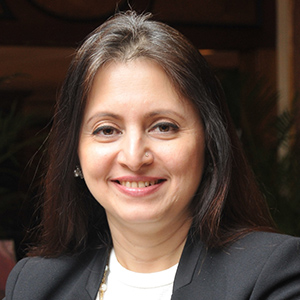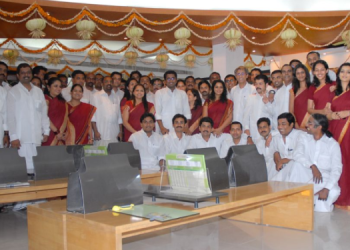‘To share that really cute image of my child or not’ – that’s a dilemma parents often face. Then there are some whose social media accounts are flooded with pictures of their children. Like with parenting, there is no right or wrong answer here. To share pictures of children on social media or not is a personal decision but it sure has experts divided.
A 2012 Wall Street Journal article coined the term ‘sharenting’, a combination of parenting and sharing. Parents keen on preserving memories and friends and family eager to ‘see’ the tots growing is mostly the motivating factor for pictures being shared online. And with the GenZ mantra of ‘if it’s not on social media, it didn’t happen’, the pressure on parents to share is immense.
However, not everything is rainbows and unicorns, and the social media is no different. Also, the advent of monetisation methods on digital media has led to a surge in parents sharing everything – from their child’s birth to their daily activities and their challenges and wins – on different social media platforms.
What appears as an innocent or unintentional act can have adverse effects on children in multiple ways. According to studies, sharenting leads to limitations on children’s ability to explore and grow their own identities and relationships. According to a report by Michigan State University, when a parent posts specific information about their child online such as the child’s full name, age, where they go to school, or to childcare, they run the risk of someone using that information to gain access to the child.
Innocent photos and videos have also been hijacked and posted on pornographic sites.

“It is important to introspect whether the problem rests with the parents and their social media habits or the social media platforms for how they handle user data or the AI technology that has made the misuse of images possible,” says Shweta Purandare, Communications Expert and Founder Tap-a-Gain.
Studies have shown that “up next” algorithms for sites such as YouTube push innocent content featuring children to users who have been watching sexually explicit content. Over 25,000 cases of suspected child pornography material were uploaded across social media platforms in India in 2020, according to a news article by The Indian Express, and based on reports shared by the National Center for Missing and Exploited Children (NCMEC) in the US, and the National Crime Records Bureau (NCRB).
While the Artificial Intelligence technology has revolutionized pretty much every industry and aspect of our lives, a report by the Washington Post in June this year defined AI as a ‘predatory arms race on pedophile forums’. AI technology can create realistic images of children involved in sexual acts, within seconds and thousands of AI-generated child-sex images have been found on forums across the dark web. There are also forums where participants have shared detailed guides for other pedophiles on how to make their own content.
Taking this into cognizance, in a significant step, France banned parents from sharing photos of their children on social media in March this year. The objective of the bill is to protect the privacy and well-being of children online, and empower parents and show young people that their images are not something that their parents have an absolute right over.
“Social media platforms like Facebook and Instagram have been popular because they enable people to stay connected with friends and family, share moments of happiness and life events. Putting restrictions would take this very essence away. Having said that, protecting online privacy and the safety of children is also extremely important. Earlier such problems of morphed videos etc happened only with celebrities, but now it is trickling down to ordinary people, too, as is evident from the France example,” Purandare adds.
Indian social media users also lack fundamental awareness of data privacy. People often take pictures and videos of unknown people without their knowledge and consent and post them online. There are several “viral” videos doing the rounds on WhatsApp to assert to this fact.
How can this be stopped in the first place?
In India, many children themselves have access to, and use social media platforms, and even if they themselves post pictures, taking away the ‘consent’ argument, do they even understand the implications of this consent?

Rajesh Vellakkat, Partner at Foxmandal Solicitors & Advocates says, “The internet is intended to remain as free from regulations as possible. Implementing age restrictions for posting images on social media or control on parents to put child images on social media will not effectively prevent the misuse of images by fraudsters. I do not disagree that pedophiles can leverage Artificial Intelligence technology and other modern techniques to create and distribute lifelike child sexual abuse material. However, refraining from posting child images on social media platforms will not solve this problem.”
He adds, “It’s akin to justifying a dress code as a means to prevent sexual abuse; the focus should be identifying the wrongdoers, punishing them, improving technology vigilance to prevent harm, not on restricting the freedom of innocent and vulnerable individuals.
“The law should target those who cause harm, not curtail the rights of the innocent. Anyone who inflicts harm upon others should be punished, rather than attempting to limit the freedom of innocent individuals. Moreover, merely preventing images on social media platforms may not be very useful, as images are available through various means, including public CCTV cameras and other media sources.”
According to Shweta, there needs to be stronger emphasis on Data Protection. Social Media platforms should take steps to ensure safety of their users online. Data protection measures need to be in place and legal measures and strong reporting mechanism and swift action should be taken to look into incidences of online harassment, cyber bullying.
“Artificial intelligence and advanced search engine algorithms should be mandated to combat the availability of sexual abuse content on the internet. Restricting the images of the child from social media is against freedom and liberties,” Rajesh opines.
So, does India need a legal framework to protect children from social media exposure and abuse?
“No fresh law is required. Present IT Act has sufficient provisions to punish the wrongdoers. For instance, there is a specific section 67B of the IT Act. It imposes punishment for publishing or transmitting material depicting children in sexually explicit act. There are many other similar IPC and IT act offences that can be made use of,” says Rajesh.
“Age verification – a stricter age verification mechanism should be put in place to prevent exposure of children to anti-social elements. Most importantly, AI technology needs to be regulated to prevent its misuse. There are multiple ways in which this can be done such as promoting responsible AI development and use, digital watermark on AI content, deep fake detection technology, traceability and penalizing unethical creation, transmission, and sale of such exploitative material,” says Shweta.
“India certainly requires measures to be put in place to protect children as well as women from misuse of their images and videos. This is a problem created by AI technology, and perhaps solution-oriented AI technology would be able to contain it as well,” concludes Shweta.
Feedback: [email protected]

















